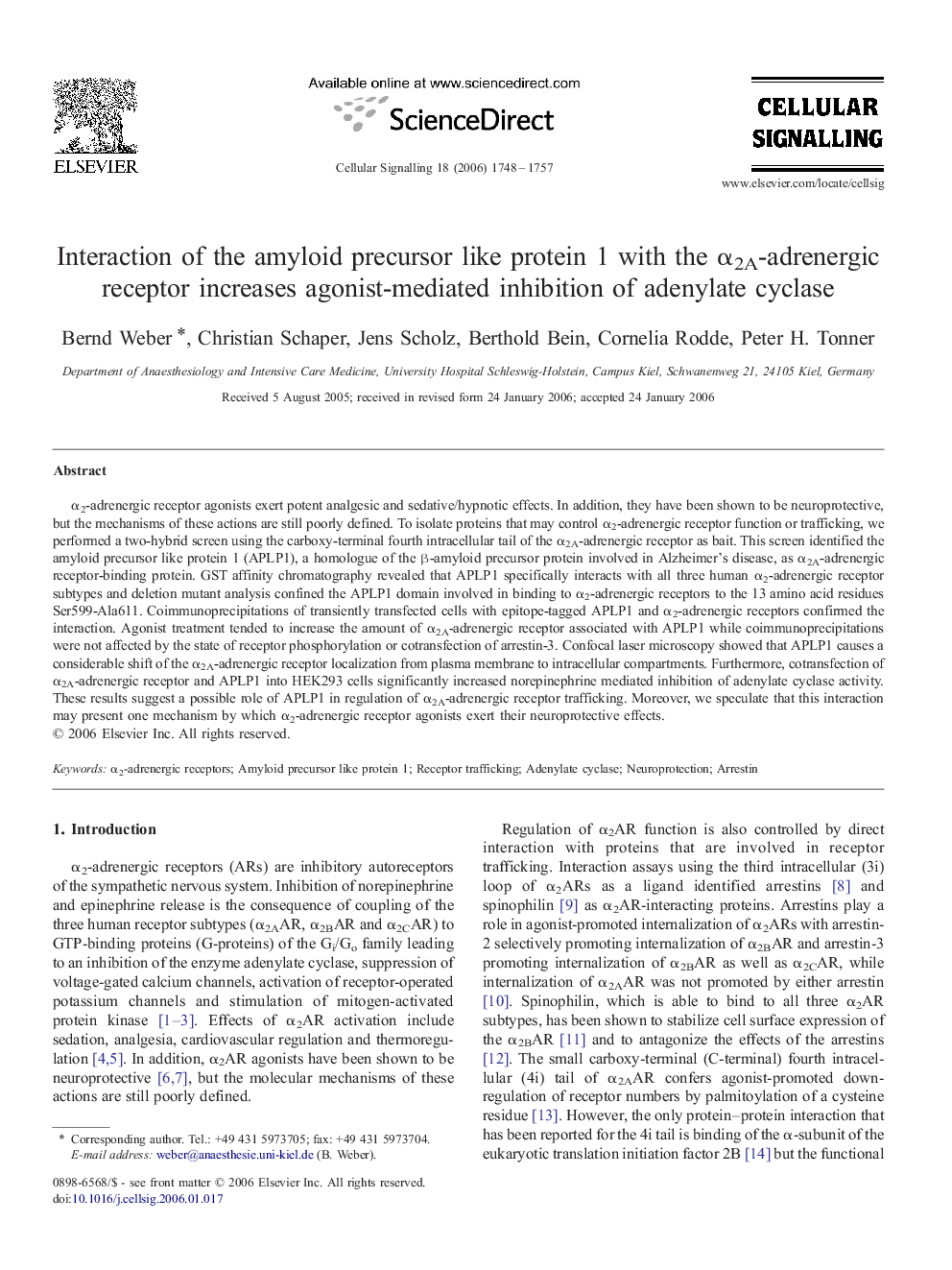| Article ID | Journal | Published Year | Pages | File Type |
|---|---|---|---|---|
| 1964453 | Cellular Signalling | 2006 | 10 Pages |
α2-adrenergic receptor agonists exert potent analgesic and sedative/hypnotic effects. In addition, they have been shown to be neuroprotective, but the mechanisms of these actions are still poorly defined. To isolate proteins that may control α2-adrenergic receptor function or trafficking, we performed a two-hybrid screen using the carboxy-terminal fourth intracellular tail of the α2A-adrenergic receptor as bait. This screen identified the amyloid precursor like protein 1 (APLP1), a homologue of the β-amyloid precursor protein involved in Alzheimer's disease, as α2A-adrenergic receptor-binding protein. GST affinity chromatography revealed that APLP1 specifically interacts with all three human α2-adrenergic receptor subtypes and deletion mutant analysis confined the APLP1 domain involved in binding to α2-adrenergic receptors to the 13 amino acid residues Ser599-Ala611. Coimmunoprecipitations of transiently transfected cells with epitope-tagged APLP1 and α2-adrenergic receptors confirmed the interaction. Agonist treatment tended to increase the amount of α2A-adrenergic receptor associated with APLP1 while coimmunoprecipitations were not affected by the state of receptor phosphorylation or cotransfection of arrestin-3. Confocal laser microscopy showed that APLP1 causes a considerable shift of the α2A-adrenergic receptor localization from plasma membrane to intracellular compartments. Furthermore, cotransfection of α2A-adrenergic receptor and APLP1 into HEK293 cells significantly increased norepinephrine mediated inhibition of adenylate cyclase activity. These results suggest a possible role of APLP1 in regulation of α2A-adrenergic receptor trafficking. Moreover, we speculate that this interaction may present one mechanism by which α2-adrenergic receptor agonists exert their neuroprotective effects.
